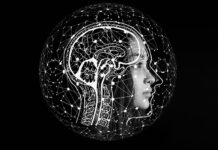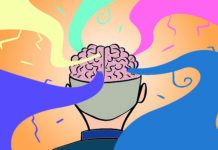Our brains change during adolescence and adulthood, and our memory changes with them. Moreover, our memory is a reconstructive process that is susceptible to distortion. In this article, we discuss the biological structure of memory. We also cover the topic of different types of memory and their strengths and weaknesses. We thus try to answer the intriguing question of how memories are formed, stored, and activated.
Memory and Memories
Memory is one of the crucial processes that decide who we are. It is a complex operation, which includes encoding, storing, and retrieving all of the information that reaches us throughout our lives. Memory is an essential part of our transformation from newborns to adults. But the principle of memory operation remains a mystery. It is often cited among the problems that we should solve within the next fifty years1.
In general, there are two kinds of memories, which can differ in two aspects: duration (time) and incapacity (storage)4. Short-term memory processes sensory information and can store it for a short time. After some time, data is either transferred to long-term memory or discarded as not important and forgotten. Short-term memory is brief and time-limited.
Long-term memory seems like unlimited storage that can collect information for many years. It contains our knowledge of the world, our skills, and memories of important days such as birthdays and anniversaries of events. Some of them fade quickly, while others can last for years. In long-term memory, we can distinguish two types: implicit memory, which is recalled unconsciously and refers to procedural memories like walking, talking, or driving a car, and explicit memory, which involves conscious effects that can be episodic or semantic. The first one recalls the episodes in our life such as details of our first day at school, our first kiss, or a particular vacation. The second one is related to general facts and knowledge, e.g., remembering the names of colors, capitals of countries, and how to use the phone.
Hippocampus – an essential structure for memory
In general, the human brain consists of nerve cells called neurons responsible for processing and forwarding various types of stimuli (visual, auditory, olfactory, etc.)5. Different stimuli responses are strictly defined by neural activity. Our memories are activated by different types of neurons placed in other parts of the brain. As a result, memories are also stored in different parts of the brain. The location of these places depends on the role played by memory. Some regions are involved in remembering episodic facts that happened to us, while others correspond to general truths.
One of the most essential brain elements responsible for memory is a tiny, curvy structure that looks like a seahorse called the hippocampus 6,7. It is connected with the amygdala, which is responsible for emotions, as shown in Figure 1. The hippocampus also combines particular sensations with emotions and serves a crucial role in learning. In the brains of birds and many other animals, it is associated with navigation: it helps us cross the mazes of modern cities. This structure is so crucial that we would be unable to remember how to draw a square on a piece of paper without it!
It is also essential for creating new memories. Did you know that the hippocampus can grow when it is regularly trained? Taxi drivers tend to have a hippocampus a bit larger than other drivers due to the constant stimulation of this part of the brain by their navigation through the city. Growth of the hippocampus during task repetition means that new neurons are created.
Figure 1. Hippocampus location in the brain. Image credit Magdalena Osial
Forget it or not
Have you ever wondered why we forget things or how to improve memory? We remember better if our senses and emotions are involved in doing something. The stronger the stimulus is, the stronger and better memories we retain. When we engage our brains’ emotions and feelings, neurons send stronger signals to each other, resulting in stronger and longer-lasting connections12.
For example, when we only sit and learn a boring list of words by heart, we can remember only a few of them. On the other hand, when we go through emotional situations, whether funny or tragic, we remember them for years! Moreover, when we do something many times, we store it in our memory for a long time. This is strongly related to the signals in our brain that are transmitted between neurons. When the signal is repetitive, new connections are formed between neurons. These connections are called synapses. Frequently used neural connections get stronger, while rarely used ones get weaker until they disappear, making us forget.
Our memory, despite its uniqueness, is not an ideal process13. It has decreasing accessibility with time (i.e., it is transient). Common memory failure is connected to lapses of attention and forgetting to do things. Temporary blockage of certain memory areas can also be caused by intense, traumatic experiences or accidents. Suggestibility, retrospective distortions, or attribution of memories to incorrect sources are just some of the errors that our memories may be subject to. In summary, our memory can play many tricks on us.
Genius inside
Some of us cannot remember faces, even of our family members, for our whole lives. That neurological condition is called prosopagnosia or face-blindness. If a person has this condition, their brain will use alternative strategies to recognize people, such as remembering voices, hairstyles, or clothing.
Another interesting condition is synesthesia, wherein when one certain sense is activated, another unrelated one is activated concurrently14. Let’s consider your phone number. Perhaps you remember the digits, but for people with synesthesia, it can also be an order of colors or smells that correspond to a particular digit. Synesthesia is not a disease. It is just an alternative “wiring” of the brain that may help us remember things. That makes their memory better than average.
Savants are people that have savant syndrome, and they are real memory masters. Some of them can remember all the books they read, learn a new language within just a few days, or recall what they had for breakfast on any given morning of the year. All these skills are only thanks to a beautiful memory15.
Short-term memories last only seconds, minutes, or hours, while long-term memories last for many years. Working memory lets us keep the information in our mind by repeating it many times, while emotions intensify. You probably do not remember all the names of your elementary school teachers. Still, you will never forget the names of your favorite or strictest ones. If we meet someone who makes us feel strong emotions, we will probably remember them and the message we got from them for a long time.
This article is a joint work of Magdalena Warczak (Institute of Physical Chemistry, Polish Academy of Sciences), Agnieszka Pregowska (Institute of Fundamental Technological Research, Polish Academy of Sciences), Karol Masztalerz (Faculty of Science and Engineering, University of Manchester), and Magdalena Osial (Institute of Fundamental Technological Research, Polish Academy of Sciences, and Faculty of Chemistry, University of Warsaw) as a part of Science Embassy project.
References
- Adolphs R., “The unsolved problems of neuroscience”, Trends Cogn Sci. 2015;19:173-175. doi: 10.1016/j.tics.2015.01.007
- Robertson M., Walter G., ”Eric Kandel and Aplysia californica: their role in the elucidation of mechanisms of memory and the study of psychotherapy”, Acta Neuropsychiatr. 2010;22:195-196. doi: 10.1111/j.1601-5215.2010.00476.x
- Kandel E.R, “The Molecular Biology of Memory Storage: A Dialogue Between Genes and Synapses”, Science 2001;294:1030-1038. doi: 10.1126/science.1067020
- Cowan N., “What are the differences between long-term, short-term, and working memory?”, Prog Brain Res. 2008;169:323-338. doi:10.1016/S0079-6123(07)00020-9
- Eichenbaum H., “How does the brain organize memories?”, Science 1997;277:330-332. doi: 10.1126/science.277.5324.330
- Bird, C., Burgess, N., “The hippocampus and memory: insights from spatial processing”, Nat Rev Neurosci 2008;9:182–194. doi: 10.1038/nrn2335
- Thompson R.F., Kim J.J., “Memory systems in the brain and localization of a memory”, PNAS 1996;93:13438-13444. doi: 10.1073/pnas.93.24.13438
- Anand K.S., Dhikav V., “Hippocampus in health and disease: An overview”, Ann Indian Acad Neurol. 2012;15:239-246. doi:10.4103/0972-2327.104323
- Hirnstein M., Hugdahl K., Hausmann M., “How brain asymmetry relates to performance – a large-scale dichotic listening study”, Front. Psychol. 2014;4:997. doi: 10.3389/fpsyg.2013.00997
- Corballis M.C., “Cerebral asymmetry: a question of balance”, Cortex 2005;42:117–118. doi: 10.1016/S0010-9452(08)70335-6
- Pascual A., Huang K., Neveu J., Préat T., “Brain asymmetry and long-term memory”, Nature 2004;427:605–606. doi: 10.1038/427605a
- Spear N.E, “The Processing of Memories (PLE: Memory): Forgetting and Retention (Psychology Library Editions: Memory Book 23)” 1st Edit., Kindle Edition, 2014
- Schacter D., “The Seven Sins of Memory”, Houghton Mifflin, 2001
- Gross., V. G. (2021, January 17). Synesthesia Project | FAQ. Boston University website. Retrieved January 7, 2022, from https://www.bu.edu/synesthesia/faq/
- Happé F., Wallace G.L., “Savant syndrome” in Encyclopedia of Human Behavior, Second Edit., King’s College, London, UK, 2012






Have you read “Funes the Memorious” from Jorge Luis Borges, the argentinian writer.?